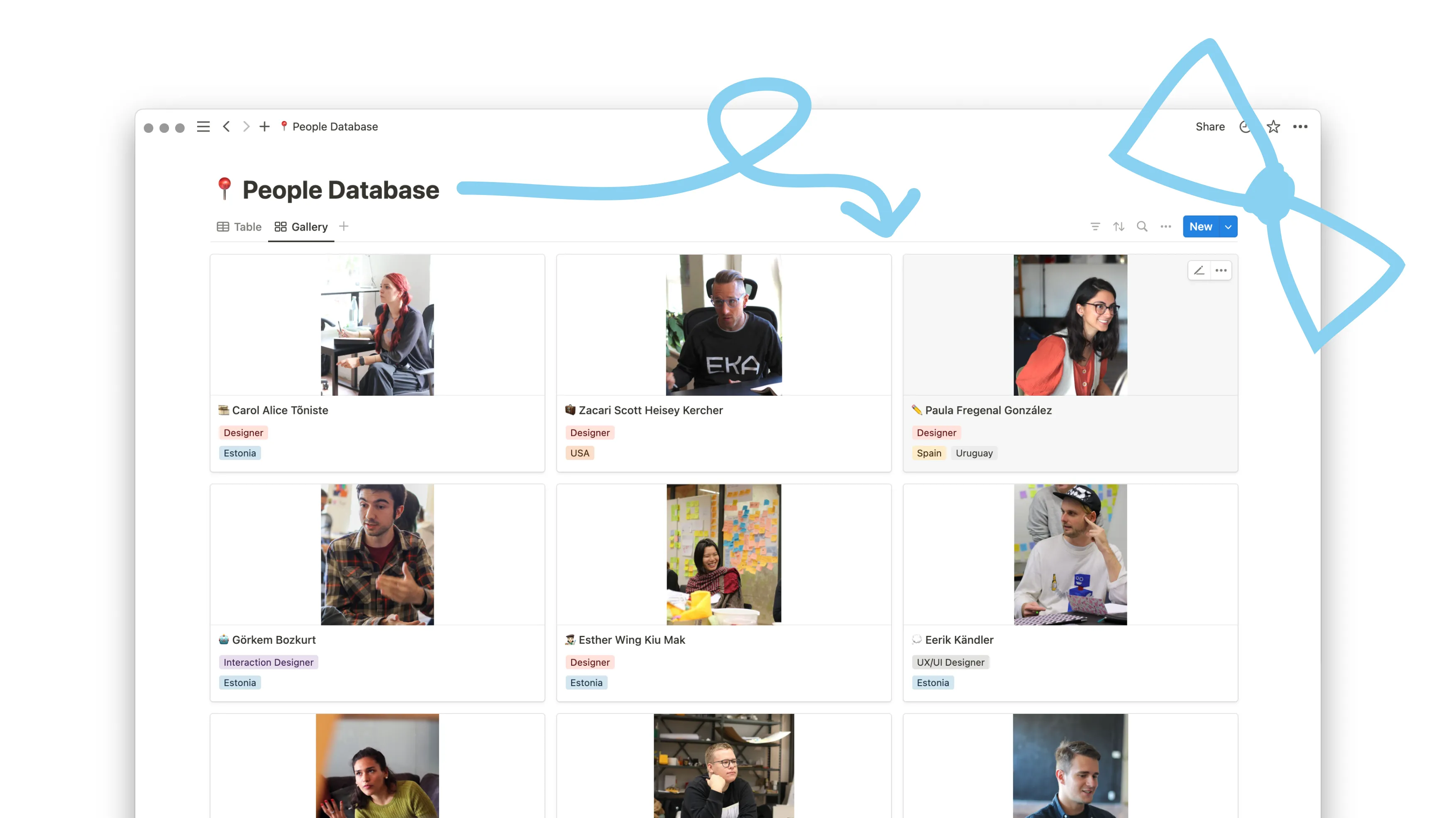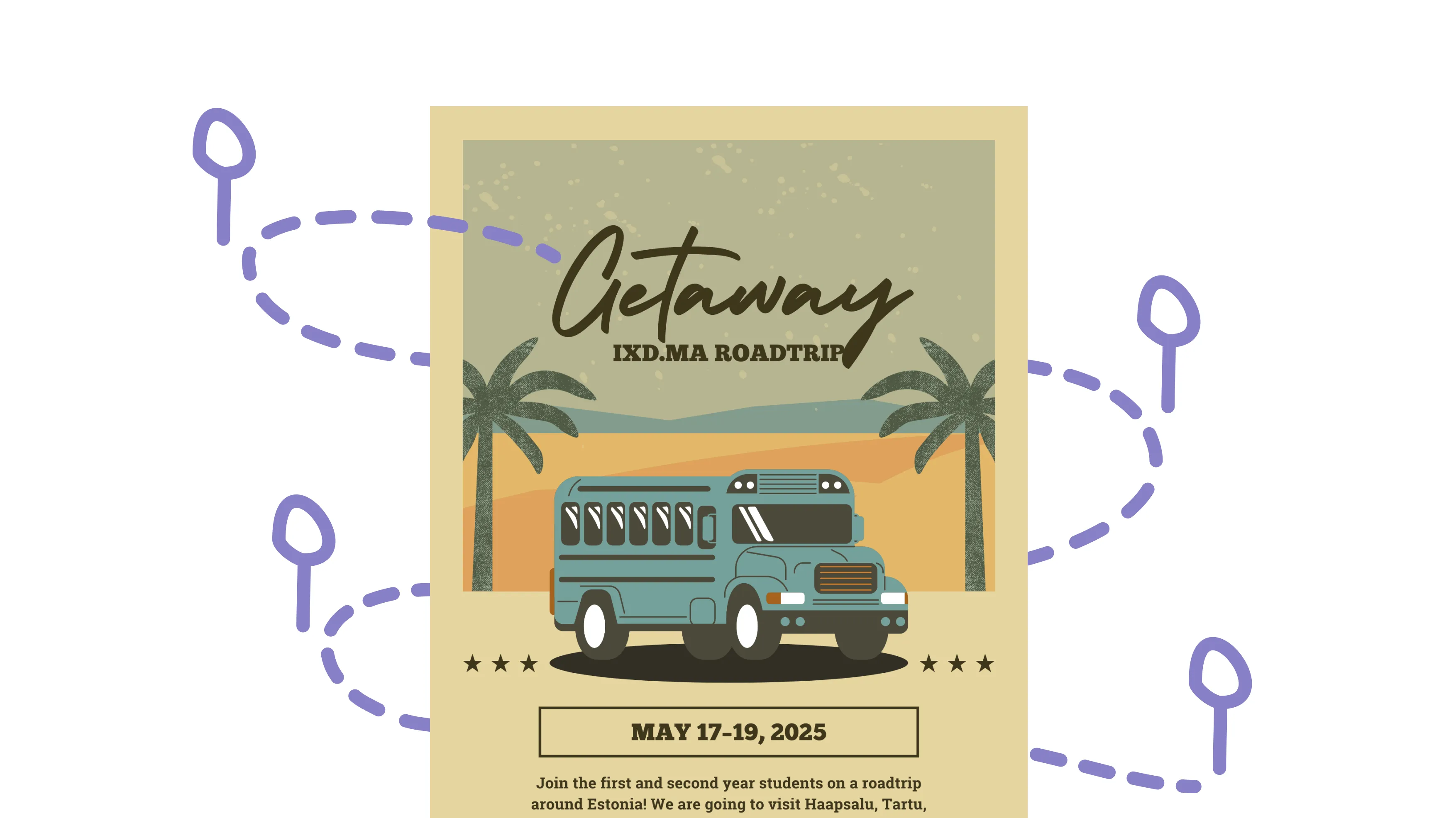I started the journey of writing my Master’s thesis (or degree project, as we call it) at the beginning of 2024. I embarked on a mission to check whether the education I was getting from the IxD.ma program at the Estonian Academy of Arts was sufficient enough for my needs. Needless to say, this wasn’t a project where I wanted to unconstructively criticize everything that we’ve been taught, but rather to give back to the community and do my part as a designer to improve the growth of the next generations of designers. This project became more than just an academic endeavor; it became a personal quest for me to bridge knowledge gaps, foster collaboration and create a lasting impact. Something that, when looking back at the project, I would be proud of.
Why It Matters
Every great project starts with a spark of inspiration, and mine was ignited by a blend of personal experiences and pressing needs. As I navigated my studies, I couldn’t shake off the fear of post-graduation loneliness. The uncertainty of what exactly I was studying and the struggles of landing a design job were constant companions. Little interactions about these issues that I was having with my peers, and their vaguely similar feelings, only added fuel to the fire burning inside of me.
This mix of personal challenges and broader issues led me to a critical realization: our program needed a stronger, more integrated community. One that supports students not just academically, but professionally and personally as well.
Building a Framework
To tackle this challenge, I adopted a mixed-methods approach, diving deep into conversations with education and industry experts and also communicating with current students and graduates of the IxD.ma program. The foundation of my project is the love triangle, which integrates three key stakeholders: students, industry, and education.
Expert Insights and Student Voices
The insights I gathered were a treasure trove of information. Experts praised the emphasis on practical learning but highlighted the need for continuous mentorship and better community connections. Students, on the other hand, yearned for stronger community engagement and robust support systems throughout their educational journey.
The Defining Question
Armed with these insights, I formulated the guiding question of my project:
“How might we create a network among IxD.ma alumni and current students to facilitate an environment for collaboration?”
This question became the cornerstone of my sustainable community blueprint.
Introducing the Sustainable Community Blueprint
The blueprint is my answer to the how-might-we question, and it consists of three core components, each designed to address specific aspects of creating a collaborative network.
Initiation: The People’s Database

The first component, Initiation, bridges the initial contact gap among community members through a comprehensive database. This database is the gateway to seamless networking, making it easy for alumni and students to connect.
Ritual: Bi-Monthly Check-In Events

Next comes Ritual, a series of bi-monthly Check-In events. These virtual get-togethers ensure continuous engagement and inspiration within the community. It’s about keeping the conversation going and the connections strong.
Getaway: The Creative Escape

Finally, there’s Getaway, designed to support smooth transitions during the fourth semester and post-graduation. The Creative Escape activities ensure that communication remains robust even after students leave the academic environment.
Impact on Stakeholders
The sustainable community blueprint isn’t just a theoretical concept; it has real-world implications for all stakeholders involved.
Students gain increased access to job opportunities and professional insights, enhanced mentorship, and a supportive network that extends beyond the classroom. This network supports their professional and personal growth, making their educational investment more valuable.
The industry benefits from improved visibility of alumni and students, enhanced industry-readiness of graduates, and stronger alignment with professional standards. Regular engagement with the academic community through Check-Ins ensures that students are prepared for real-world challenges.
Education is enriched through real-world practice and peer learning, producing graduates who are technically proficient and well-networked. The curriculum aligns more closely with industry expectations, ensuring that students are well-prepared for professional success.
Reflection
Throughout the project, I embraced an iterative design process, incorporating feedback from testing phases to refine and enhance each component of the blueprint. This approach ensured that the final design was responsive to the actual needs of the users.
The journey doesn’t end here. The next steps involve implementing the blueprint within the IxD.ma program and continuously refining it based on real-world feedback. This iterative approach ensures that the blueprint remains effective and responsive to the needs of the community.
The sustainable community blueprint aims to foster a collaborative and supportive environment for IxD.ma students and alumni. This project not only addresses current gaps in design education but also provides a scalable model for other programs. Join me in shaping the future of design education, one connection at a time.